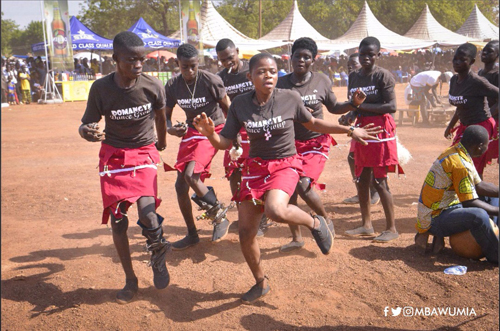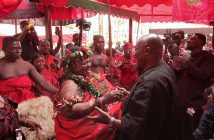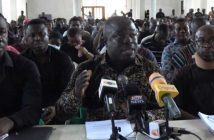In our previous article we looked at the two festivals of migration celebrated by the people of Ghana. Today we will be looking at one farming festival, popularly known for the people of the Northern parts of Ghana.
Nandom Kakube festival
This celebration, established by Naa Puore Puobi Chiir VII, Paramount Chief of the Nandom Traditional Area in 1989, is to thank family divine beings and request that they favor the dirt, secure the general population amid the cultivating seasons.
Nandom which is a community with a populace of around 80,000 pride itself in showing appreciation to God and the family divine beings for a decent reap amid the cultivating period and to request their persistent gifts and security for a safe condition, rich soil and downpour in the coming cultivating season.
During the celebration, the people prepare foods such as Saab, Koose, Maasa, djodjo (groundnut soup with leaves) together with the well-known neighborhood drink pito
There is a show of conventional music furthermore, move, “bine” and “bewaa” alongside.
With the help of the xylophone and “dalara.”
Every year around October, the Kobine (pronounced “Kó-bin-ah”) festival is celebrated in Lawra, Ghana. It serves as both a harvest celebration and as a homecoming for people who have left Lawra. People come to Lawra from as far away as Accra (capital of Ghana) or Ouagadougou (capital of Burkina Faso) to join in the festival. The Kobine festival lasts four days.
Most out-of-town guests arrive on the first day. This gives them time to visit with their family and friends. It’s also a day of rest for those who have travelled from far away.
The second and third days are the official festival days. The festival begins with the procession of the traditional chiefs. Each festival participant is clothed with their most beautiful smocks while walking under huge parasols. The procession is led to the festival ground by a group of men portraying elephant “hunters”.
The “hunters” are dressed in traditional hunting attire, including bows and arrows, and “hunt” a small group of “elephants”. These “elephants” are another small group of men holding huge, dried elephant ears, which are waved back and forth. These “hunters” and “elephants” are accompanied by a large group of musicians and drummers from the Lawra Chief’s (Lawra Naa’s) palace. An incredible amount of people watch the performance which starts at the Lawra Naa’s palace and continues to the festival grounds. There’s lots of dust and excitement in the air.
During the Kobine festival, the market is not in the usual market square but rather on the festival grounds. The market is larger than usual and there are lots of things to buy. You can find beautiful Ghanaian cloths, calabashes, food, and bicycles. You can also buy traditional artefacts such as antelope horns, skins, elephant bones and feet, and xylophones. traditional artefact on display
And of course, everyone is drinking pito the local drink brewed of sorghum and all the pubs are crowded. The last festival day is for saying good-bye to family and friends and to recover from the hangover!





